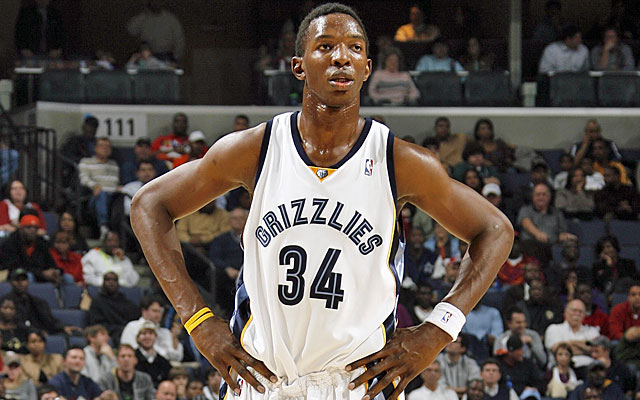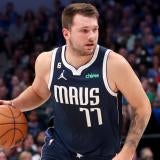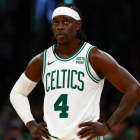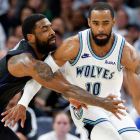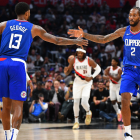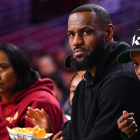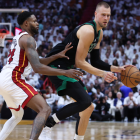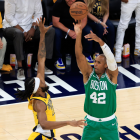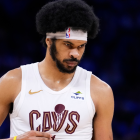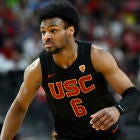It has been a pretty terrific 10 years for the NBA's D-League ... against all odds. The league has evolved from a fringe minor league that saw teams constantly on the edge of folding to seeing stability and a role only growing larger in the NBA as both a talent pool and a place for its intended goal, development.
Next season the D-League will open with 19 teams, all of which will have a one-to-one relationship with their affiliate. Of the 11 franchises still without a D-League team, several are already in the planning stages of adding their own D-League franchise. The Nets (read more), Hornets (read more), Hawks (read more), Wizards (read more) and Clippers (read more) have all been linked to such efforts. So it's entirely possible that by 2018 (or sooner), we could be finally looking at the one-to-one affiliate ratio the NBA has been pursuing since the D-League's inception.
If that system finally does come into place, there could be major changes to the NBA and basketball as a whole.
AN EXPANDED DRAFT
First, let's start here. In an excerpt from David Aldridge's always-excellent column this week, there's a good chance the league could expand the draft in that scenario:
And once every NBA team has its own D-League team, the assumption is there will be a need for more players to fill out those rosters -- and the need to expand the Draft by at least a round, maybe two. "If everybody's going to have a D-League team, that's eight more positions that everybody's going to get," one longtime GM said over the weekend. "Maybe you go to five (rounds) the first year to allow everybody to stock the teams, and then the next year, you go down to four."
A bigger Draft would need the approval of the National Basketball Players' Association, which agreed to reduce the Draft from seven rounds to three in 1988 and to two the following year. The idea was to give more players the freedom to decide where they wanted to try and play as free agents instead of being locked into a team with long-shot hopes of making the roster. (Mavs owner Mark Cuban said last year he supported a bigger Draft so teams could take more players from overseas and have more players to try and develop that were theirs.)
Another general manager proposed that players taken after the second round of an expanded Draft have so-called "two-way" contracts, similar to those used for some players in Major League Baseball and the National Hockey League. Such contracts pay salaries based on whether the player is in the major leagues or the minors.
Source: Even in wake of Saunders news, Wolves have hope | NBA.com.
All of these are good ideas, and would make the draft more interesting, at least for college fans looking to see if their players would wind up getting a chance. There will be the standard skepticism, as almost no players taken beyond pick 30 are going to wind up as a star in this league. (Yes, yes, you cry "Draymond Green." I hear you. Remember, Green's the exception to the rule, not the rule. Remind yourself of that constantly.) But there are so many players with legitimate talent that simply never develop because there's no real mechanism in place for them to do so. A better D-League offers the chance at that.
There's also a domino effect here. As Aldridge says, adding more players to the draft has to be bargained with the players. You can bet that they will demand a better pay structure than what the D-League currently affords. The A-level players in the D-League make $25,000. That number will rise if the players bargain for it, and if the league decides to get serious about keeping the players it drafts and assigns in-house. (Many players, even those whose NBA rights are owned by the parent club, choose to sign in Europe for better money.)
What's the effect of raising salaries? It opens the door significantly to players signing with the D-League out of high school. If you can make a decent living focusing on basketball, that's going to change a lot of young men's minds. We've seen some players already skip high school for the D-League, and this could provide opportunities for players whose families need the money now, vs. a scholarship from a D-1 school.
Then, if players are able to actually provide for their families out of high school, that could soften the union's stance on what Adam Silver has been after since he took over: raising the age limit for the NBA. The top players will still likely choose to attend college so it won't hurt NCAA basketball, but that scenario provides the best of both worlds. Players who desperately need the money can parlay their talent into income, but they can't make millions as a player until they're more seasoned as a 20-year-old.
This, of course, is unlikely to happen since it makes sense, and most CBA negotiations are void of anything resembling logic.
WHY SHOULD FANS CARE?
OK, so more non-stars get drafted, and you have to stay up later watching the draft. What's the big deal? Why should fans care about the D-League expanding?
Remember Hasheem Thabeet? Drafted No. 2 overall in 2009 (Could have been Stephen Curry, who went seventh) turned out to be a total waste of a pick. Thabeet was eventually traded along with a draft pick to Houston just so Memphis could get rid of the stink. He bounced around, landed in OKC for a few years, then wound up in ... the D-League, where he's a borderline player.
But there's a reason Thabeet was picked No. 2. The 7-foot-3 center was a star at UConn, and even with as raw as he was, there was definitely an NBA player hidden somewhere in the garbage that was his NBA career. However, Memphis did not have a D-League team at the time, and did not send him down for assignment. They just sat him, and he spent month after month trying to work on things in spurts and the tiny amount of practice time afforded to rookies during the year.
Instead, imagine if Thabeet had been drafted and assigned to the D-League long-term, where coaches employed by the Grizzlies had only worked on certain aspects with him. There's still a great chance that Thabeet would have faltered in the NBA, but his odds of at least being a rotation player would have improved dramatically. Bear in mind that this would have been for a team whose backup center behind Marc Gasol was Hamed Haddadi for years. Even if Thabeet never turned into Hakeem Olajuwon 2.0, just becoming a decent rim protector and rebounder would have worked out for both Memphis and Thabeet.
Again, maybe Thabeet simply never had it between the ears, or the skill simply evaded him. His chances, though, would have improved dramatically.
The D-League would give teams a chance to take a long-term approach to a player who isn't ready yet, and that could be invaluable. Every year a dozen raw prospects go through the draft process and get chewed up by the draft-summer-league-training-camp process. Many are never heard from again. You want to turn raw talent into rotation players to help ease minutes and reduce injuries? It requires raising the costs, level of play and facilities available, but there's already evidence that the D-League can make a difference.
FOLLOW THE WINS
You know which teams are really great at using the D-League? The Rockets and the Spurs, along with the Celtics and Thunder. Rio Grande Valley (Rockets) and Austin (Spurs) have both implemented the systems their parent clubs use. Coaching staffs are integrated and key team principles are replicated.
The D-League, like most tools, can be valuable if used correctly and invested in. Otherwise, you can waste it. It doesn't always work: The Jazz built a strong relationship with the Utah Flash (who were independently owned), which didn't work out. There's more evidence that a strong D-League relationship can benefit your team than not, however. It's not a coincidence that the three Texas teams -- San Antonio, Houston, and Dallas -- have built strong relationships and have been playoff teams for the majority of the last decade. Oklahoma City followed the Spurs' model under Sam Presti, purchasing the Tulsa 66ers (now the Oklahoma City Blue).
This chart from Upside and Motor is indicative of the trend:

You're going to find more teams in winning situations than losing ones on the high end of that chart. There are exceptions (Bulls, Clippers, Heat) but you also notice that the teams on the high left end of that chart always seem to find quality depth and keep their reserves stocked.
Using the D-League won't make you a contender. It's not the difference in a championship, or a long playoff run. The league is still about stars, but if you want to do the most to help with your depth and talent development, the D-League is a great place to start.
Or you can just trust European teams you have no control over, running different systems in a different style of play to develop your key young players. Your call, really.
The D-League remains pretty far away from where it needs to be. There are still over a third of the league without teams (though, again, that will change by next fall). Profitability for teams remains an issue, particularly those who aren't outright owned by an NBA team. The quality of play has been impacted over the past several seasons by talent heading overseas. All of this can change if the owners decide to get serious, but it will take a concerted effort.
One thing's for certain: There are benefits to teams, players and fans if the D-League finally reaches its goal of 30 affiliates for 30 NBA teams.
